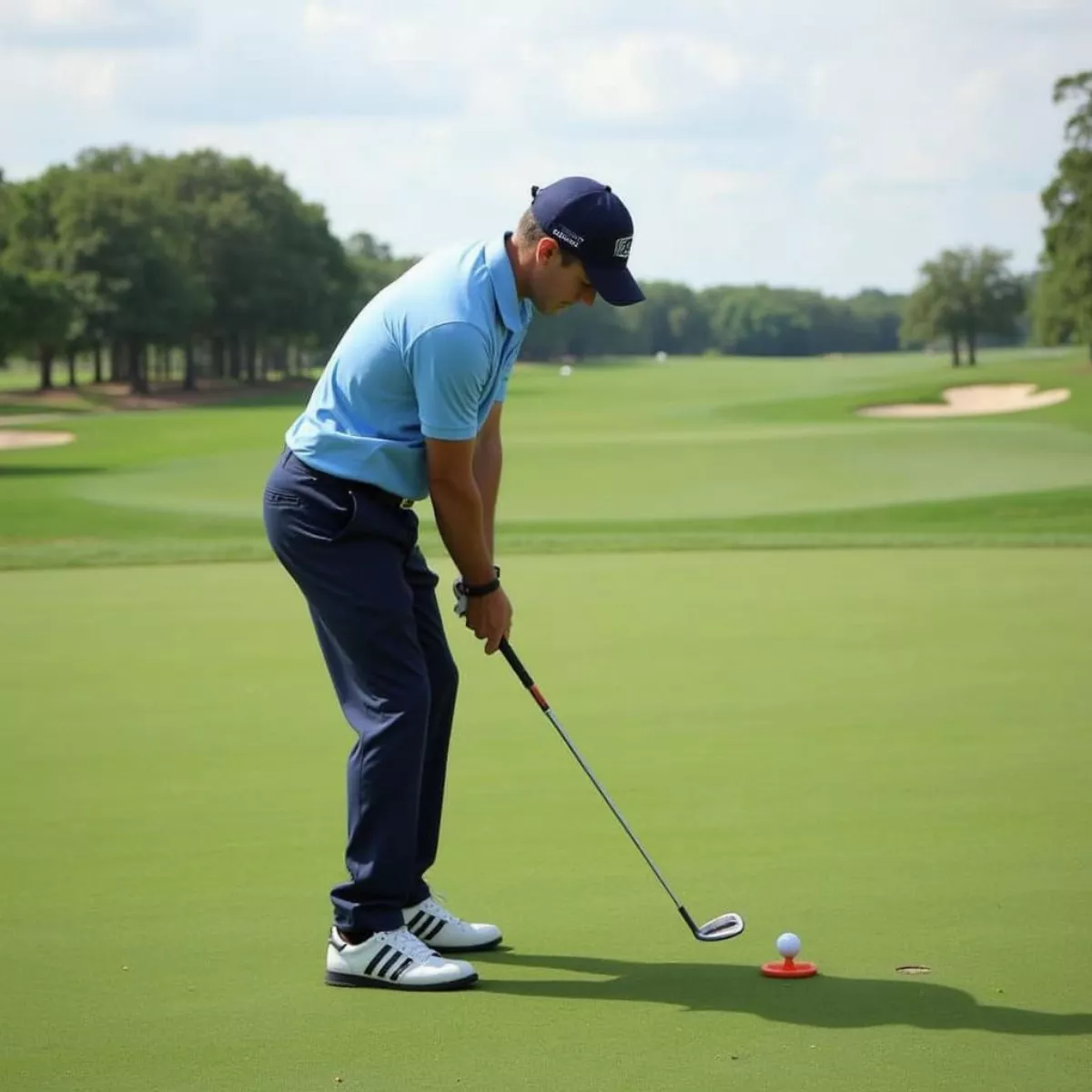Welcome to your go-to guide for generating backspin with your wedges! Whether you’re an avid weekend warrior or a dedicated golf enthusiast, mastering backspin can elevate your short game significantly. Not only does backspin help your ball stop on a dime, but it also adds an exciting dynamic to your game that will impress your friends on the course. In this article, we’ll delve deep into the techniques, tips, and tricks you need to produce that oh-so-important backspin.
Understanding Backspin
Before we delve into the mechanics of generating backspin, let’s understand what it is. Backspin occurs when the bottom of the golf ball spins away from the direction of travel. When you strike the ball with a clubface that’s open to its path, the friction between the grooves of your wedge and the ball, along with the angle of your shot, generates this spin. Mastering backspin involves a combination of the right equipment, technique, and conditions.
Essential Equipment
- Wedge Selection: Choose a lob wedge or sand wedge for optimal backspin. These clubs typically have higher lofts and are designed for short, precise shots.
- Groove Condition: Ensure your wedges have sharp grooves. Worn-out grooves can significantly reduce the amount of backspin you can achieve.
- Ball Choice: Opt for urethane-covered golf balls, as they offer better grip and friction for generating spin compared to those with a harder cover.
Technical Skills Required
Generating backspin requires a blend of skills. Here are the essential aspects to focus on:
- Angle of Attack: Striking the ball with an ascending angle helps to create more spin. Aim to hit the ball with a steep angle.
- Clubface Position: Keep the clubface slightly open at impact to enhance spin.
- Ball Position: Position the ball more toward your front foot (left foot for right-handers) to facilitate a cleaner strike.
The Mechanics of Generating Backspin
1. Grip Pressure
- Maintain light grip pressure. Holding the club too tightly can limit your wrist’s ability to hinge and release at impact, reducing spin potential.
2. Stance and Alignment
- Position your stance slightly left of target (for right-handed golfers) to ensure a clean strike and proper angle of attack. Your alignment should reflect this as well – this will help in delivering the right angle to the ball.
3. Wrist Action
- A proper wrist action, or wrist hinge, during the backswing is crucial. This allows for more clubhead speed at impact. As you swing down, release your wrists gently to create a smooth transition.
 Golfer demonstrating wrist hinge during backswing
Golfer demonstrating wrist hinge during backswing
Practice Drills for Backspin
To master backspin, practice is key. Here are some drills to help you perfect your technique:
- Hitting into a Hill: Find a slope and practice hitting your wedges into the hill. The uphill slope can help you build your angle of attack while emphasizing clean contact.
- Chipping with Purpose: When chipping onto the green, pick specific targets and adjust your swing speed and angle accordingly. Focus on landing your chips just short of the target, allowing them to roll forward, then spin back.
- Short Game Blitz: Dedicate a session exclusively to wedge play. Use different lies, practice chips and pitches, and pay attention to how your ball reacts.
 Golfer chipping ball onto green
Golfer chipping ball onto green
Conditions for Generating Backspin
Many factors affect backspin, some of which you can control while others depend on the environment. Here are things to keep in mind:
- Course Conditions: A firm and dry green will allow for better backspin than a wet, soft one. If the green has been recently mowed and is fast, you may have better luck generating spin.
- Humidity: High humidity can help the grass stay lush, reducing roll-out and increasing your chances of backspin.
Key Takeaways
- Use lob wedges or sand wedges for high loft shots.
- Ensure your club grooves are in good condition.
- Position the ball toward the front foot for optimum angle.
- Maintain a light grip and practice proper wrist action.
- Adjust for course conditions to maximize spin opportunities.
Frequently Asked Questions (FAQs)
1. How can I tell if my wedges are worn out?
- Check for smooth grooves. If they don’t feel sharp or if dirt doesn’t come out easily, you may need to replace them.
2. Does the spin ratio vary by club?
- Yes! Typically, a lob wedge will produce more spin than a pitching wedge due to the increased loft and design.
3. What type of golf ball is best for backspin?
- Urethane-covered golf balls generally provide better control and increased friction for generating backspin.
4. Can I generate spin from any lie?
- While it’s easier to generate spin from a clean lie, you can still create backspin from tight lies. Just focus more on your technique and angle of attack.
 Golf ball resting in rough near green
Golf ball resting in rough near green
5. How important is the golf course’s green type for backspin?
- Extremely! Fast and firm greens are more conducive to backspin than slow or soft ones.
6. Should I modify my swing speed for backspin?
- Not necessarily, but a smoother swing often produces better contact, which helps with spin. Focus on a rhythmic, controlled swing.
7. Is backspin only important on short shots?
- While it mainly applies to short game shots, understanding how to create backspin can improve your control on approach shots as well.
8. Do professional golfers generate backspin differently?
- Professionals often utilize advanced techniques, and their skills may allow them to produce backspin from less-than-ideal situations or with more advanced equipment.
9. Can practice balls help with backspin?
- Yes! Practice balls that mimic the feel of a high-quality golf ball can be useful when training for backspin.
10. How can visualization improve my backspin technique?
- Visualizing the shot before you take it can boost confidence and help you execute the technique more effectively.
By incorporating the techniques discussed in this guide, you’ll be well on your way to mastering backspin with your wedges. Remember, practice makes perfect, and the more you work on your technique, the more consistent your spin will become. Share your experiences and tips with friends on the course, and don’t hesitate to come back for more golfing advice and tricks! Happy Swings!